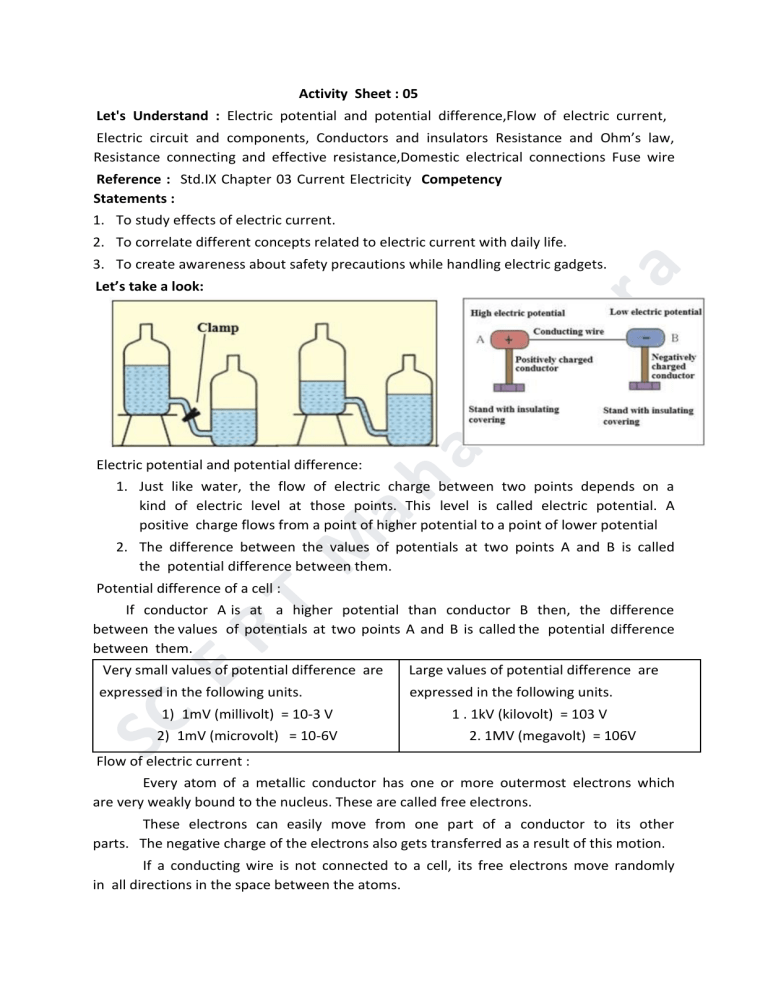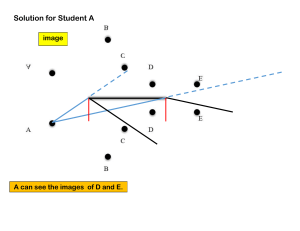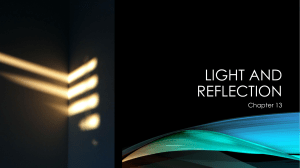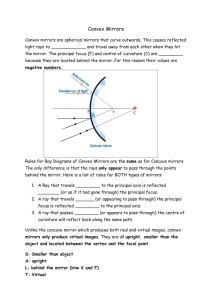
Activity Sheet : 05 Let's Understand : Electric potential and potential difference,Flow of electric current, Electric circuit and components, Conductors and insulators Resistance and Ohm’s law, Resistance connecting and effective resistance,Domestic electrical connections Fuse wire Reference : Std.IX Chapter 03 Current Electricity Competency Statements : 1. To study effects of electric current. 2. To correlate different concepts related to electric current with daily life. 3. To create awareness about safety precautions while handling electric gadgets. Let’s take a look: Electric potential and potential difference: 1. Just like water, the flow of electric charge between two points depends on a kind of electric level at those points. This level is called electric potential. A positive charge flows from a point of higher potential to a point of lower potential 2. The difference between the values of potentials at two points A and B is called the potential difference between them. Potential difference of a cell : If conductor A is at a higher potential than conductor B then, the difference between the values of potentials at two points A and B is called the potential difference between them. Very small values of potential difference are Large values of potential difference are expressed in the following units. 1) 1mV (millivolt) = 10-3 V 2) 1mV (microvolt) = 10-6V expressed in the following units. 1 . 1kV (kilovolt) = 103 V 2. 1MV (megavolt) = 106V Flow of electric current : Every atom of a metallic conductor has one or more outermost electrons which are very weakly bound to the nucleus. These are called free electrons. These electrons can easily move from one part of a conductor to its other parts. The negative charge of the electrons also gets transferred as a result of this motion. If a conducting wire is not connected to a cell, its free electrons move randomly in all directions in the space between the atoms. When we connect the ends of the wire to the two terminals of a cell, electric force acts on Sr. Name of No. quantity Meaning / Definition Formula 1. Potential difference The amount of work V done to carry a unit W/Q positive charge from point A to point B is called the electric potential difference between the two points. 2. Electric current The charge passes through a conductor in unit time. Units = 1 A = 1C/1S 3. 4. Resistance Resistivity Ratio of Potential difference and electric current. Resistance of substance. capacity a Ohm 1 Ohm = 1 V / 1A R ×l/A Ohm - meter the electrons. Being negatively charged, they start moving from the negative (lower potential) to the positive (higher potential) terminal of the cell. Due to the flow of these electrons, current starts to flow through the wire. Quantities related to electric current : Ohm’s law : The relationship between the current flowing through a wire ( I) and the potential difference across its ends (V) can be obtained from Ohm's law. If the physical state of a conductor remains constant, the current (I) flowing through it is directly proportional to the potential difference (V) between its two ends. I α V, I = kV ( k = constant of proportionality) I × 1/k = V ( 1/k = R = Resistance of the conductor ) I × R = V Hence V = IR or R= V/I This is known as Ohm’s law. Electric circuit : A continuous path of an electric current through conducting wires connected to the two ends of a cell and other resistances is called an electric circuit. Conductors Insulators Current can flow easily through such materials. Current cannot such materials. They consist of free electrons. Does not consist of free electrons. They have very low resistance. They have extremely high resistance Ex. Metals Ex. Non metals System of resistors and effective resistance : Resistors in series 1) The same current flows through each resistor. flow Resistors in parallel The potential difference across the end of all resistors is the same. through 2) The effective resistance of the resistors The inverse of the effective resistance is equal is equal to the sum of their individual to the sum of the inverses of individual resistances. resistances. 3) The effective resistance is larger than The each of the individual resistances . of resistors 4) This arrangement is used to increase This arrangement is used to reduce the resistance the resistance in a circuit. in a circuit. 5) R s = R 1+ R 2 + R 3 + ---- 1 /R P = 1/R 1 + 1/R 2 + 1/R 3 Domestic electrical connections : The electricity in our homes is brought through the main conducting cable either from the electric pole or from underground cables. Usually, there are three wires in the cable. One is called the live wire which brings in the current. It has a red or brown insulation. The other wire is called neutral wire through which the current returns. It is blue or black. In India, the voltage difference between the live and neutral wires is about 220V. Both these wires are connected to the electric metre through a fuse. Through a main switch, they are connected to all the conducting wires inside the home so as to provide electricity to every room. In each separate circuit, various electrical appliances are connected between the live and neutral wires. The different appliances are connected in parallel and the potential difference across every appliance is the same. The third wire is called the earth wire and is of yellow or green colour. This is connected to a metal plate buried deep underground near the house and is for safety purposes. Fuse wire : Fuse wire is used to protect domestic appliances. It is made of a mixture of substances and has a specific melting point. It is connected in series to the electric appliances. If for some reason, the current in the circuit increases excessively, the fuse wire gets heated up and melts. The circuit gets broken and the flow of current stops, thus protecting the appliance. This wire is fitted in a groove in a body of porcelain like non-conducting material. For domestic use, fuse wires with upper limits of 1 A, 2 A, 3 A, 4 A, 5 A and 10 A are used. Let’s Practise : Q.1) a) Rahul has connected different electrical components to make an electric circuit.Is this circuit connection correct or incorrect? Write your opinion in detail. —------------------------------------------------------—------------------------------------------------------—------------------------------------------------------—------------------------------------------------------—------------------------------------------------------—------------------------------------------------------- Q.2) Consider the electric circuits given below and answer the questions i) In which circuit bulbs will glow with dim light ? Why? --------------------------------------------------------------------------------------------------------------------------------------------------------------- ------------------------------------------------------------------------------- ii) In which circuit bulbs will glow with bright light ? Why? --------------------------------------------------------------------------------------------------------------------------------------------------------------- -------------------------------------------------------------------------------Q.3) A student noted readings in his home’s electricity metre on Sunday at 8 a.m.and again on Monday at 8 a.m.,based on this information answer the following questions . a) What was the metre reading on Sunday ? —---------------------------------------------------------------------------- b) How many units are consumed in one day ? —---------------------------------------------------------------------------- c) If the rate per unit is Rs.5 What is the amount of electricity bill for one day? —----------------------------------------------------------------------------— ----------------------------------------------------------------------------—-- ------------------------------------------------------------------------------- Q.4) Observe the given circuit diagram and find equivalent resistance. —------------------------------------------------------------------------------------------—------------------------------------------------------------------ —-------------—---------------------------------------------------------------------------------------------------------------------------------------------Q.5) Which precautions will you take while handling electric gadgets or while using electricity? How will you aware others also regarding this issue? Write your opinion. —----------------------------------------------------------------------------— ----------------------------------------------------------------------------—-- Activity Sheet : 06 Let’s understand : Work, Energy, Mechanical energy, Law of conservation of energy and Free fall. Reference : Std. IX, Chapter 02 Work and Energy Competency Statements : 1) To explain the interrelationship between work and energy and to identify the type of work done in everyday instances. 2) To explain the logic involved in examples of work, energy and power from everyday life and to solve numerical problems. Let's’ take a look : 1) Work : In which of the pictures above has work been done? Work is said to be done when a force applied on an object causes displacement of the object. Work = Force x Displacement SI unit of work, W=Newton-metre ( Nm), This is called Joule. 1 Joule : If a force of 1 Newton displaces an object through 1 metre in the direction of the force, the amount of work done on the object is 1 Joule. SI unit of work, W=Dyne-centimetre, This is called erg. 1 erg : If a force of 1 dyne displaces an object through 1 centimetre in the direction of the force, the amount of the work done on the object is 1 erg. Relationship between Joule and erg: 1 Joule = 10 7 erg 1) Positive work : When the force and displacement are in the same direction , the work done by the force is positive. eg. pushing a stalled vehicle. Negative work : When the force and displacement are in the opposite direction , the work done by the force is negative. eg. Stopping a moving cycle by applying brakes. Zero work : When the applied force does not cause any displacement or when the force and the displacement are perpendicular to each other , the work done by the force is zero. eg. Tying a stone to one end of the string and swinging it round and round by the other end of the string. 2) Energy : The capacity of a body to perform work is called its energy. SI unit : Joule, CGS unit : erg Kinetic energy : The energy which an object has because of its motion is called kinetic energy. Examples : Energy in flowing water, Energy in fast ball. Equation of kinetic energy (K.E.) = mv 2 ( Here m = mass and v= velocity) Potential energy : The energy stored in an object because of its specific state or position is called its potential energy. Examples : Energy in stretched bow, Energy in compressed spring, Energy in stored water kept at height. Equation of potential energy (P.E.) = mgh ( Here m = mass, g= acceleration and h=height) 3) Transformation of energy : Energy can be transformed from one type to another. 4) Law of conservation of energy : Energy can neither be created nor destroyed. It can be converted from one form into another. Thus, the total amount of energy in the universe remains constant. 5) Free fall : An object falling solely under the influence of gravitational force is said to be in free fall or to be falling freely. Every object has potential energy when it is at height above the ground and it keeps getting converted into kinetic energy as the object falls towards the ground. 6) Power : Power is the rate at which work is done. If W amount of work done in time t then, Power = Work/time i.e. P = W/t The SI unit of power is J/s. This is called watt. (1w=J/s) In the industrial sector the unit used to measure the power is called ‘horsepower’. 1 horsepower = 746 watt The unit of energy for commercial use is kilowatt hour. (1 kWh = 3.6 x 10 6 J. Electricity used for domestic purposes is measured in units of kilowatt hour. (1 kWh = 1 unit) Let’s Practice: Q.1) Write down any four forms of energy found in your home. ______________________________________________________________________ ______________________________________________________________________ Q. 2) Name a household appliance that converts electrical energy into light and heat. ______________________________________________________________________ ______________________________________________________________________ Q. 3) Make a list of electrical appliances in your home. Write how energy is transformed in those devices. ______________________________________________________________________ ______________________________________________________________________ Q. 4) Write two examples each of potential and kinetic energy. ______________________________________________________________________ ______________________________________________________________________ Activity Sheet: 07 Let’s Understand : Mirrors and types of mirrors, Spherical mirrors and images formed by them, Magnification due to spherical mirrors. Reference : Std. IX Chapter 12 Study of sound Competency statement : 1. To identify the different types of mirrors, to give a scientific explanation of the images formed by them and to draw the related ray diagrams. 2. To obtain the number of multiple images with the help of experiment. 3. To find out the scientific reasons for the use of the different types of mirrors in our daily life. Let’s took a look : Observe the mirror used at your home, at the side of the bike and in headlights. 1. Are these three mirrors the same? 2. What is the difference between these three mirrors? 3. Have you noticed any difference between plane and spherical mirrors? 4. Are the side mirrors of the bike and the mirror in the headlight used the same? Let’s Do Place two plane mirrors at an angle of to each other and place a small object between them. Observe the images formed in both mirrors. Now change the angle between the mirrors and observe the images. Number of images can be calculated as per given formula. n = number of images, A = angle between the mirrors. Check if the number of images that can be obtained for different values of angles is consistent with the above formula. Spherical mirrors : A. Concave mirror Terms related to spherical mirrors: B. Convex mirror Uses of concave mirrors 1. Barber shop, dental hospital – If the object is placed between the pole and focus of the mirror, an erect, virtual and magnified image is obtained. 2. Torch and head lamps of vehicles- The source of light is kept at the focus of the mirror. Thus, a parallel beam of light is obtained. 3. Flood lights- The source of light is placed a little beyond the centre of curvature of the mirror. This gives a bright beam of light. 4. Various equipment using solar energy - Sun rays reflected by a concave mirror come together in the focal plane. Uses of convex mirrors 1. Mirrors on the sides of cars are convex mirrors 2. Big convex mirrors are fitted at the gate and in the square. The light gets dispersed by a convex mirror and focused by a concave mirror. Mirror formula: We get the correct values of distances by using the Cartesian sign convention. The object distance (u) is the distance of the object from the pole, while the image distance (v) is the distance of the image from the pole. The relationship between the object distance, image distance and the focal length ( f) is called the mirror formula. This formula is valid for all spherical mirrors, for all positions of objects, under all circumstances. Magnification due to spherical mirrors As the object is always kept above the principal axis, its height is always taken to be positive. For virtual images, the height is positive while for real images, it is negative. As the object is kept on the left of the mirror, its distance (u) is always negative. Images formed by concave mirrors Position of the object No. Nature of image Position of the image Size of the image Between pole and focus 1 2 At the focus Behind the mirror Magnified At infinity Very large Between focus and centre of curvature 3 Magnified At the centre of curvature Beyond the centre of curvature At the centre of 4 Same as object Inverted, real curvature Beyond the centre of curvature 5 Inverted, real Diminished the 6 At a very large ( infinite) distance At focus Inverted, real Point image Let’s Practice : 1) Name the devices made by using the concave mirrors. ______________________________________________________________________ ______________________________________________________________________ 2) How to make a water heater with the help of a concave mirror? ______________________________________________________________________ ______________________________________________________________________ 3) Which type of mirrors are used in the following equipment? Periscope: ___________________ Shaving mirror: _______________________ Street light: __________________. Head lamps of a car: ___________________ 4) If the object in front of the concave mirror is kept in between the centre of curvature and principal focus then, explain the position, nature and size of the image by completing the following figure. ______________________________________________________________________ ______________________________________________________________________ 5) Calculate the focal length of a convex mirror with radius of curvature 32 cm. —------------------------------------------------------------------------------------------------------------------------------------------------------------- 6) Create a kaleidoscope using three plane mirrors, card sheets and colored pieces of bangles etc. Activity Sheet : 08 Let’s Understand : Carbon, Allotropes of carbon Reference : Std. IX Chapter 13 Carbon: An important element Competency Statements : In table, cotton, vegetables, petrol, medicines, paper, oil, foodstuffs, fuels, clothes etc.carbon is a common and important constituent. Allotropes of carbon-some elements occur in nature in more than one form. The chemical properties of these different forms are the same but their physical properties are different. This property of elements is called allotropy. Like carbon, sulphur and phosphorus also exhibit allotropy. Crystalline form Diamond Properties 1 .Hardest and bad conductor of electricity. 2 . Insoluble in any solvent. 3 .Acids/Bases have no effects. Uses Graphite 1 .Black, soft, brittle, slippery 2 .Good conductor of electricity Fullerene 1 .Used as insulator 2 .Catalyst in water purification 3 At certain temperature exhibit superconductivity Three crystalline forms of carbon are given in the table below. Try this: Apparatus : Pencil, electrical wire battery/cell, small bulb Arrange the above materials as shown in the picture and verify the electrical conductivity property of graphite. Non crystalline form of carbon: Arrangement of carbon atoms in this form is not regular. 1 Coal: Coal is a fossil fuel. It occurs in the form of Peat,Lignite, Bituminous, Anthracite. 2 Charcoal: The charcoal that is made from animals is made from their bones and horns etc.The charcoal made from the plants is formed by combustion of wood in an insufficient supply of air. 3 Coke: The pure coal that remains when coal gas has been taken away from coal is called coke. Uses of coke: 1) Domestic fuel 2) Reducing agent 3) In the production of water gas (CO +H 2) , producer gas (CO + H 2 + CO 2 + N 2 ) Let’s Practice . : Q 1) Name the following. a) The hardest allotrope of carbon __________________________ b) Allotrope found in the form of Bucky ball ________________________ c) Non crystalline allotrope that is made from the bones and horns of animals __________________________________________________ Q 2) Fill in the blanks in the box below. Q. 3) Write any two uses of graphite. ______________________________________________________________________ ______________________________________________________________________ Q. 4) Write the flow chart showing classification of carbon. ______________________________________________________________________ ______________________________________________________________________ Q. 5) Identify the allotropes of carbon from the atomic structure given below and write their two properties . i) __________________ ii) ___________________ ______________________________________________________________________ ______________________________________________________________________ Links for more study : Carbon Introduction Activity Sheet : 09 Let’s Understand : Organic and Inorganic compound, Hydrocarbon, Covalent compounds, Properties of covalent compound, Saturated and Unsaturated hydrocarbon Reference: Std. IX, Chapter 13 Carbon An important element Competency Statements: 1) To identify organic and inorganic compounds in our daily use. 2) To draw the structural diagram of a covalent compound in the form of an electron dot model. 3) To classify the saturated and unsaturated hydrocarbon Let’s take a look: Compounds obtained directly or indirectly from plants and animals are called organic compounds and compounds obtained from minerals are called inorganic compounds. Organic compounds Inorganic compounds Paper Salt Petrol Wax Iron Water Natural gas Sugar Protein Glass Hydrocarbon : Basic organic compounds Along with carbon, the element hydrocarbon is also included in most organic compounds. The compounds formed from only carbon and hydrogen are called basic organic compounds. These are also called hydrocarbons. The electronic configuration of carbon is 2 ,4. If four electrons are added to the second orbit of carbon, its octet becomes complete and its electronic configuration becomes stable like that of the nearest inert gas neon (2,8).Therefore the valency of carbon is 4 .This occurs by sharing of electron rather than a give and take of electrons.The chemical bond forms such a way is called as covalent bond. When a carbon atom shares one electron each with four hydrogen atoms and forms four C-H bonds, a methane CH 4 molecule is formed. The molecule formed by sharing electrons is called a covalent compound. Structural formula and electron dot model of methane. Properties of covalent compound: 1) Covalent compounds have low melting point and boiling point. 2) Generally they are insoluble in water and soluble in organic solvents. 3) They are poor conductors of heat and electricity. Saturated and unsaturated hydrocarbon The hydrocarbons having only single bonds between carbon atoms are called saturated hydrocarbons. The hydrocarbon having double or triple bonds between carbon atoms called unsaturated hydrocarbons. Let’s Practice : 1) Classify the following substances into organic and inorganic substances. Spoon, Kerosene, earthen pot, wood, bell, carbonates , LPG, DNA ______________________________________________________________________ ______________________________________________________________________ 2) Find an odd one out. Sugar, cotton, salt, paper____________________________ Ethene, Ethane, Ethyne , Propene____________________ Methane, Ethane, Ethene, Propane____________________ 3) Observe the following structural formula and identify the type of hydrocarbon. ( i) ………………………. (ii) ………………………….. ( iii) ………………………….. 4) The chemical formula of ethane is C 2 H 6 (iv) ……………………….. . Draw its structural formula. 5) Observe the following electron dot model and identify the compound.What type of compound is this ?Write the two properties of this compound.





